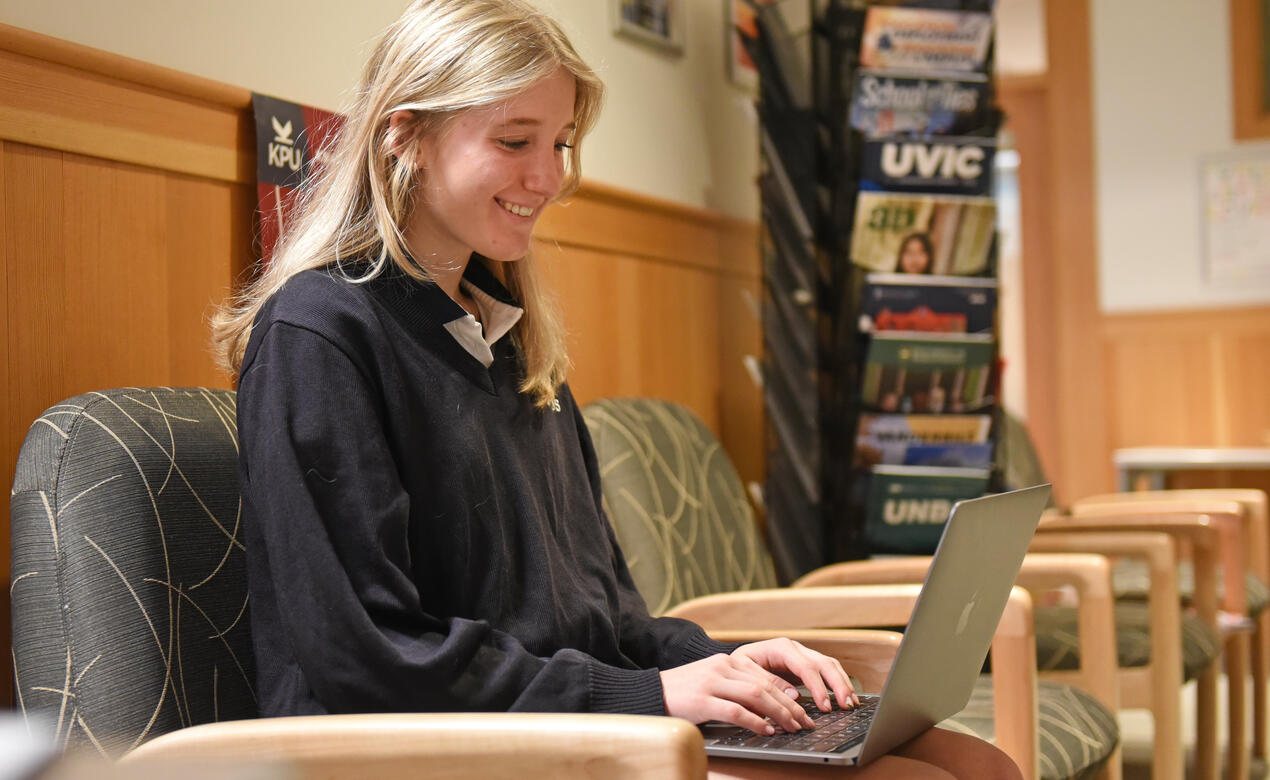
Last week, SMUS's University Counselling department brought a large group of Grade 12 students to southern Ontario to visit 11 universities in person.
The experience of being on a university campus really helps students to visualize their own post-secondary pathway in a way that website descriptions and printed viewbooks just cannot do. However, for any number of reasons it is not always feasible to visit a campus in person – let alone visiting all the schools you may be interested in applying to.
There are great resources students and families can strategically access to get the next best thing to visiting a campus. Here are four ways you can get as much information about life ‘on the ground’ at a university campus, without actually being on the ground.
Check Out Virtual Tours and Vlogs
If COVID did anything, it forced universities to upgrade their online resources, such as virtual tours to showcase all aspects of campus life. The quality of virtual tours is now significantly better than it was even two years ago. So, of course, the first go-to to get to know the campus is to check out the virtual resources on the university’s website, or on YouTube. Remember that any virtual tour produced by the university is a marketing tool, so you’ll get the best, most polished view of campus life, including the most modern buildings, gyms, cafeterias and dorm rooms.
YouTube and TikTok are also replete with ‘day in the life’ videos created by current students showing the experience of life on campus. These can be a great way to get a sense of a university. Most of these are not professionally made, and so they can show a more ‘unvarnished’ experience of campus life.
Look at a Map
You probably know which city or province the university is located in. But, do you know where in the city or town the university is located? Is it right downtown – urban, busy and exciting? Or is it just outside the town, with easy access to nature and opportunities to hike or be in the outdoors? How easy will it be to get to school when, after first year, you might not live in on-campus dorms?
You should also familiarize yourself with a campus map. Is it a small campus with short distances from one building to another? The walk from your dorm to the library, labs or lecture halls where you’ll spend most of your time might be a pleasant and easy 5-minute stroll, or it might be a 10-minute run to get there in time to get a good seat for class or a quiet study carrel during exam season. In cold winter months, you may have to bundle up between classes, or if you’re lucky, you’re at a campus with tunnels and covered pathways.
Follow University Social Media Accounts
Social media platforms and the accounts universities and student groups host are great indicators of school culture. If the student union has an Instagram page, you’ll get to know what’s important to students by the kinds of posts they make and campus events they promote. You can follow accounts of faculty-based programs as well. Name your major of interest or a club you’d like to join, and there will likely be a student group with an Instagram or TikTok account, so you can see what they’re up to. It’s another great way to get to know campus culture and to see how you will find like-minded students there.
Chat with SMUS Alumni
We have a vast network of alumni who have attended (or still attend) universities around the world. Chances are there is an alum at a university you are interested in knowing more about. We can help connect you via SMUS Connect, our school’s networking platform for students and alumni! It is a great place to find out where our alumni are currently studying or where they may have graduated from. Chatting with someone who has attended a university you’re interested in is a great way to get honest insight into the on-the-ground student experience. “How is the food in the dining hall? How are the dorms? Who are the best profs? Where’s the best place to study on and off campus? Is the public transit system reliable? How cold does it really get in the winter?” It’s a great way to lean into the broader SMUS community for advice and personal experience.
Take stock of what really matters to you about your campus experience and look for indicators that those features exist at the campuses you’re touring online. The key is to consult information from a variety of sources to get as full a picture as you can get.
If you take the time to craft your own ‘360’ experience of campus, from the comfort of your own home, you’ll get the next best experience to being there and will be able to make a well-informed choice about your post-secondary path.



